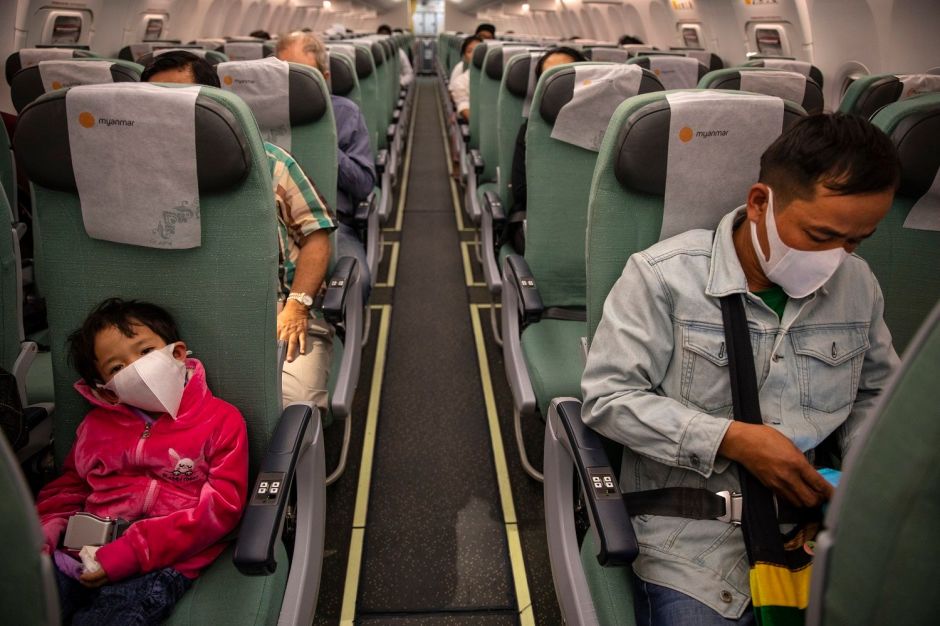Coronavirus Can Spread During Flights, CDC Investigations Reveal | The NY Journal
[ad_1]

After analyzing the case of two international flights in which at least 18 people were infected by passengers sick with COVID-19, two Research from the US Centers for Disease Control and Prevention (CDC) indicates that the coronavirus can be spread during flights.
“Although the international flight industry has judged the risk of in-flight transmission to be very low, long flights in particular have become a matter of growing concern as many countries have started to lift flight restrictions despite the continuous transmission of SARS-CoV-2 ″, specify the investigations published in the Emerging Infectious Diseases of the CDC.
One of the investigated cases is that of a 27-year-old Vietnamese businesswoman who traveled to Italy with her sister on February 18, 2020, then moved to Paris and then spent a few days in London. Eleven days later, she began to experience a sore throat and cough while continuing her social life. On March 1, he took a flight to Hanoi, the capital of Vietnam, where he sought medical attention. Laboratory tests confirmed that he was suffering from COVID-19 and his sister as well.
Investigators were able to locate 100 percent of the Hanoi flight crew and 84 percent of the passengers; the remaining 16 percent had already moved to other countries. Of the travelers located, 16 tested positive for SARS-CoV-2 with ages ranging from 30 to 74 years.
The other investigation
A second case of COVID-19 transmission on long flights analyzes the trajectory of a Hong Kong married couple who tested positive for SARS-CoV-2 on March 15. Before the flight and within the 14-day incubation period, they visited Toronto, Canada (February 15 to March 2), New York (March 2 to 5) and Boston (March 5 to 9).
The couple allegedly infected two flight attendants who treated them and the researchers could not “quantify the rate of virus attacks on this flight because not all the passengers were evaluated ”.
In conclusion
“The most likely route of transmission during flight is transmission by aerosols or droplets of case 1 (the Vietnamese businesswoman), especially for people seated in business class. Contact with case 1 may also have occurred outside the plane at the airport, particularly among business class passengers in the waiting room prior to departure or during boarding, ”says the investigation, which also does not rule out contact from healthy passengers with the sick passenger in the immigration area and on the baggage claim strips.
“It has been hypothesized that a combination of environmental factors in aircraft (humidity, temperature, air flow) can prolong the presence of SARS-CoV-2 in the flight decks“The researchers write, adding:” The most recent guidance from the international air travel industry classifies the risk of in-flight transmission as very low and recommends only the use of face masks without additional measures to increase physical distance on board, such as block the middle seats. Our findings challenge these recommendations. “
“We conclude that the risk of SARS-CoV-2 transmission on board during long flights is real and has the potential to cause large clusters of COVID-19“Even in business class with spacious seats, so“ whenever COVID-19 poses a global pandemic threat in the absence of good testing at the point of care, better infection prevention measures are needed on board and procedures detection insurance so that flying is safe ”, they conclude.
.
[ad_2]
Source link


